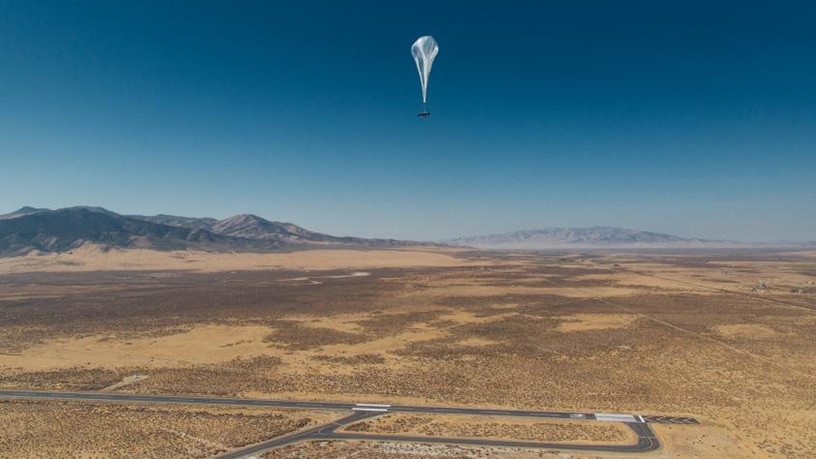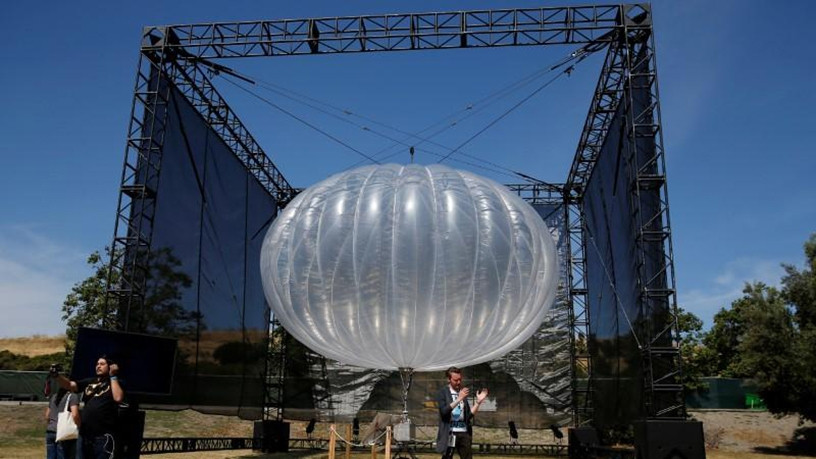Project Loon hopes to work with operators in Africa to bring its Internet balloon technology to the continent.
"We have been testing the wind currents and the winds in Africa since the beginning of this year and we really look forward to hopefully working with some of the operators here to figure out how to extend their networks to provide connectivity to their unconnected folk," said Alastair Westgarth, head of Project Loon at X.
He was giving a keynote address at AfricaCom 2017 in Cape Town.
Westgarth said one of Project Loon's balloons recently made the 10 000km journey from Peru to Africa and landed in Queenstown in SA, where a recovery crew picked it up.
X (formerly Google X) is owned by Alphabet and calls itself a "moonshot factory", with Project Loon pioneering balloon-powered Internet as a way to provide connectivity to remote locations.
Big problems, ambitious ideas
"At X, what we do is look at really big problems, and connecting rural communities and remote communities is a really big problem. We look at really ambitious ideas to do that, like balloon-powered Internet," he said.
"Approximately half the world does not have ready access to broadband and that is even worse in remote communities, where it is one in three. That's a serious problem that we need to address.
"When we started the project five years ago, we bought latex weather balloons off Amazon, put a WiFi router in a Styrofoam box and launched them. We then chased them with pickup trucks to see if we could get them to work."
He says now the project is operating at scale.

"The balloons are now the size of tennis courts; we can launch one every 30 minutes. We coordinate with local air traffic control as our balloon transits from the launch site up to 60 000-feet to make sure it doesn't cause any issues with aviation or air traffic."
He said one of the balloons can provide coverage of up to 5 000 square kilometres, which is twice the size of Cape Town and the surrounding areas. The balloons are also self-sustaining. They are solar-powered and have a battery so they can operate at night. The balloons have also been tested, a lot, with a total of 27 million kilometres flown so far.
"We have created a network of balloons that fly 20km in the sky and effectively work as a really tall tower. People often say that's a long way away, but when there is nothing blocking the signal you can connect directly to a 4G handset; there is no intermediary required.
"With the software we have developed at X we can steer these balloons. We can send them to different altitudes when the wind is going different directions. With this same software we can cluster the balloons together, hang them over a specific spot and provide prolonged coverage in a specific area."
Disaster areas

Westgarth explained how the balloon technology was recently used to provide Internet connectivity in both Peru and Puerto Rico following natural disasters which knocked out traditional telecommunications infrastructure.
"We were doing all of this testing in Peru late last year when disaster struck northern Peru. Floods hit, record floods, and 800 provinces were declared states of emergency."
He said the company was already working with its partner there, Telef'onica, and decided to try help bring connectivity back to the flood zone where infrastructure had been knocked out.
"We went from a handful of users to literally hundreds of thousands of users. We were in Peru for almost 100 days and did 20 000 altitude manoeuvres during that time. We covered an area of 40 000 square kilometres, literally the size of Switzerland."
He pointed out that whenever Loon operates it does so in collaboration with telco partners.
"Someone sitting in Peru, when that happened, when they looked at their phone they would not have seen the network as Loon but rather Movistar, the Telef'onica brand there. So, as far as the user is concerned, it is literally an extension of the existing network."
Ironically, the launch site where the balloons took off for the Peru operation was in Puerto Rico which was itself hit by a hurricane just two months ago.
"Five hurricanes hit the Caribbean over the course of the last few months. Hurricane Maria was a direct hit on Puerto Rico [in September] and made landfall on our launch site. Huge amounts of infrastructure were knocked out," Westgarth said.
Project Loon stepped in once again in partnership with T-Mobile and AT&T, and helped restore connectivity in Puerto Rico, and its balloons are still there.
"Unfortunately, these disasters happen; however, we are able to respond to them. But we learned something really quickly; we learned that our system could work at scale. That we could cover huge amounts of ground and connect hundreds of thousands of people, which was our plan, and provide LTE to those people from 20km in the sky," he said.
The tech was ideal for the disaster scenarios, to help restore connectivity, but also has far-reaching possibilities for providing connectivity to remote areas like many found on the African continent.
Share